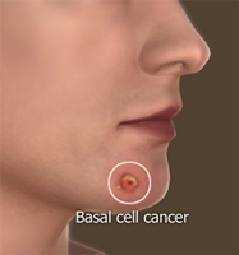Skin Cancer and Flap Surgery for Face and Neck

Skin Cancer
Skin cancer occurs when skin cells are damaged by harmful ultraviolet (UV) radiation from the sun or artificial sources like tanning beds. This damage causes changes in the genetic material (DNA) of the skin cells, leading them to grow uncontrollably and form a tumour.
These tumours may appear as a new growth, sore, or lesion that does not heal.
Skin cancers are broadly divided into two categories:
- Non-melanoma skin cancers – Includes basal cell carcinoma (BCC) and squamous cell carcinoma (SCC).
- Melanoma – A more aggressive type of skin cancer that can spread to other parts of the body.
Types of Skin Cancer
- Basal Cell Carcinoma (BCC)
- The most common type of skin cancer, accounting for around 80% of cases.
- Appears as:
- A small, pearly nodule
- A pinkish patch of skin
- A sore that heals and then returns
- A yellowish, waxy scar-like lesion
- Cause: Usually results from short-term, intense UV exposure, such as during vacations.
- Common locations: Face, ears, scalp, neck, and trunk.
- Growth: BCC grows slowly and rarely spreads (metastasizes) to other parts of the body, making early treatment highly effective.
- Squamous Cell Carcinoma (SCC)
- Represents about 20% of all skin cancers.
- Appears as a crusted, scaly, or rough patch of skin.
- Risk factors:
- Long-term, cumulative sun exposure
- More common in fair-skinned individuals, especially middle-aged and elderly people
- Common locations: Face, scalp, ears, neck, hands, and other sun-exposed areas.
- SCC grows faster than BCC and can spread if not treated promptly.
- Melanoma
- The most serious form of skin cancer.
- Usually develops from an existing mole, but can also appear as a new pigmented spot.
- Warning signs:
- Changes in size, shape, colour, or texture of a mole
- Appearance of a new mole that looks unusual
- Melanoma is malignant, meaning it spreads quickly to other organs if not detected and treated early.
- Any suspicious mole should be examined immediately by a specialist.
- Rare Skin Cancers
Though uncommon (about 1% of all skin cancers), other types include:
- Merkel cell carcinoma
- Kaposi’s sarcoma
- Cutaneous T-cell lymphoma
Treatment of Skin Cancer
The primary treatment for all types of skin cancer is surgical removal of the cancerous tissue.
The surgical approach depends on:
- The type of cancer
- Its size and location
- Whether it has spread to other areas
For cancers that have the potential to spread, surgery may be followed by radiation or chemotherapy to eliminate any remaining cancer cells.
Surgical Options
- Simple Excision
- Small skin cancers, especially on the face and neck, are removed under local anaesthesia.
- The wound is then closed with stitches.
- A small margin of healthy tissue is removed along with the tumour to ensure complete removal.
- Wide Excision
- For larger tumours, a wider and deeper area of tissue is removed.
- This can result in visible scars, particularly on the face or neck.
- Reconstructive techniques such as skin grafts or flaps may be used to restore appearance and function.
Reconstructive Surgery After Skin Cancer Removal
Skin Graft
- A thin layer of skin is taken from another, less visible area of the body, such as:
- Inner thigh
- Behind the ear
- Neck area (to match colour and texture)
- The graft is carefully placed over the wound.
- A dressing is applied to secure the graft and promote blood supply.
- Antibiotics are prescribed to prevent infection.
- Initially, the graft may look different in colour, but over time it blends with surrounding skin.
- The donor site heals naturally within a few weeks.
Skin Flap
- Used for larger and deeper wounds where a skin graft alone is insufficient.
- A thicker section of skin with underlying tissue, blood vessels, and nerves is moved from an adjacent area.
- The flap remains partially attached to its original site to maintain blood flow.
- Both the wound and the donor site are closed with stitches.
- Requires a longer hospital stay but offers better functional and cosmetic results than a skin graft.
Post-Surgery Recovery and Care
- Follow all wound care instructions to minimize infection risk.
- Attend follow-up appointments for monitoring and scar management.
- Use sunscreen daily and avoid prolonged sun exposure to reduce recurrence risk.
- Report any new growths, sores, or changes in existing moles immediately to your doctor.
Key Points to Remember
- Early detection is critical, especially for melanoma.
- Regular skin checks and sun protection are essential preventive measures.
- Most non-melanoma skin cancers have an excellent cure rate when treated promptly.
- Reconstructive surgery options like grafts and flaps can significantly improve cosmetic appearance after tumour removal.
